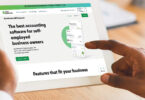A blend of old-school traditions and cutting-edge technology helps manage internal day-to-day business processes
By Donna Shryer
Every day seems to bring new high-tech software systems or apps that promise to streamline business, support in-house team communication, save time and increase productivity. But let’s not turn our backs on every old-school tool.
No technological advancement can beat a CRS’s intuition and experience.
Here are several ways to smoothly blend old-world and high-tech business tools—along with pros and cons to help identify the ideal mix for your office.
Organizing Notes
Old school: File, stack and pile important documents and handwritten notes
- Pros: A study called “The Pen is Mightier Than the Keyboard” reports that those who take notes with pen and paper learn and retain information better.
- Cons: Piles of legal pads, folders and coffee shop napkins with hastily scribbled reminders are easy to misplace, difficult to share with team members and tough to search through for elusive information.
New school: Standalone, cloud-based document management systems
- Pros: With online access you have effortless team sharing and quick document retrieval at any location. You can also do a keyword search to find notes faster.
- Cons: Some programs are feature-packed, which is great if you’ll use them. However, bells and whistles come with a learning curve, steeper cost and decreased speed.
By the numbers
So how much is this going to cost you? Here’s how much REALTORS® spend annually on business technology, according to NAR’s most recent survey.
| Agents | Brokers | |
| <$100 | 8% | 4% |
| $100-250 | 9% | 5% |
| $251-500 | 15% | 11% |
| $501-1,000 | 27% | 21% |
| $1,001-2,000 | 22% | 22% |
| $2,001-3,000 | 12% | 19% |
| $3,001-5,000 | 5% | 8% |
| >$5,000 | 3% | 9% |
Source: 2013-14 REALTOR® Technology Survey Report
Cloud-hosted document management apps store and organize digital and paper media, including handwritten, text and PDF documents as well as photographs, videos, audio files, checklists and web clips. To convert paper into digital documents, you need a scanner, or a phone or tablet with a scanning app, but it’s a minor effort compared to the major benefits, says
Beth Jaworski, CRS, associate vice president of Shorewest REALTORS®, which serves the metro Milwaukee market.
Jaworski prefers Evernote, which she has used since 2013. “Evernote was a game changer for me,” she says. “Each client gets a unique notebook, and every piece of paper, contract, amendment, photograph, closing statement—it all goes into the client’s Evernote notebook. As long as I have internet access, I can pull up any document or file no matter where I am. That’s a huge benefit since I’m always on the go.”
If you’re more interested in a simpler, smaller, cloud-based task management app, consider Wunderlist. It’s the top choice for Judy Niemeyer, CRS, broker/REALTOR®, with Ashurst Niemeyer Real Estate in Baldwin County, Alabama. Wunderlist stores lists, from to-do lists to buyer or seller lists, and there’s ample capacity to store, manage and create categorized folders, add notes to lists, set reminders and notifications, add due dates and print lists. While you cannot store documents, you can set reminders to ensure that documents are delivered and reviewed on time. “It’s the best organizational tool I’ve ever found,” Niemeyer says.
Data Mining
Old school: Gut instinct, MLS and deep market knowledge
- Pros: Reliable, current data combined with honed market knowledge make for a dynamic duo.
- Cons: Traditional data mining relies on historical information.
New school: Predictive analytics
- Pros: An extra layer of confidence for nuanced or even volatile markets.
- Cons: These programs can be pricey, they’re not crystal balls and it’s tough to beat an agent who’s plugged into their neighborhood and their local MLS.
Predictive analytics programs begin with historical data and apply statistical algorithms to forecast future market trends—from who’s most likely to list their home next to probable property values in evolving neighborhoods.
“Opportunities to find the best deals on homes for sale still exist—they just aren’t as easy to find in today’s inventory-crunched real estate market,” says Alex Villacorta, executive vice president and chief economist with HouseCanary, a real estate data analytics firm. “Predictive analytics analyze broader markets to predict future trends and find the pockets of opportunity that are hiding in plain sight. It’s an extra layer of information for sellers, homebuyers and investors.”
As for the REALTOR®, Villacorta adds, “If your niche is helping homebuyers relocate, predictive analytics offers insights into neighborhoods you don’t intimately know—you can help your seller client navigate buying a home from across the country.”
Not ready to purchase a high-tech predictive analytics program? Crystal McCall, CRS, Broker Associate with Keller Williams Cornerstone Realty, serving Ocala-Marion County and The Villages, Florida, suggests RPR reports, which pull data from MLSs and commercial information exchanges (CIEs). RPRs, a service that comes with every NAR membership, offer exclusive online access to comprehensive real estate market data, analytics and reports for each of NAR’s constituencies. Data is still based on historical knowledge, although these reports are more robust, diving into details about local schools, market statistics, neighborhood demographics, property history and listing activity.
Open House Sign-In Tools
Old school: Clipboards, paperwork, chitchat and patience
- Pros: A personal, get-to-know-you element may make a potential buyer feel more comfortable.
- Cons: Even serious buyers don’t have the time or desire to manually fill out forms, and for REALTORS®, deciphering penmanship is a nightmare.
New school: Mobile device open house sign-in apps
- Pros: Speed, user-friendly, easy to read.
- Cons: People will still input fake contact info to decrease emails, texts and unsolicited phone calls.
REALTORS® are taking a shine to digital open house sign-in apps. As a helpful bonus, look for an app that sends visitors an automatic thank you follow-up email—with your contact information and a direct link to the viewed home. Some apps also let you prioritize leads by grouping those without an agent or a home to sell. Of course, you also want an app that promotes easy sharing between teammates.
Electronic Signature
Old school: Get in the car and drive important transactional documents over to the client for signatures
- Pros: Some clients value one-on-one human contact, which comes with an opportunity to ask questions.
- Cons: Driving documents, one at a time, devours hours from a REALTOR®’s already packed day.
New school: Digital signatures
- Pros: Any document can be pulled up on any internet-accessible device and signed digitally within minutes.
- Cons: Some people still do not trust electronic signatures.
Since 2014, Jaworski has successfully used DocuSign, which is integrated into her agency’s unique website and their agent app. “I can bring up any transactional document on my tablet—an offer, counter-offer, amendment, delivery of loan commitment or whatever—and everything can be signed right then and there. It’s very transparent. When we rolled out digital signatures, it was a joyous day,” she says.
On the other hand, McCall is open to going old school when necessary. “I use eSign and Dotloop, although sometimes my mature clients want to read a contract. I understand that—many people are visual learners. So, I make a special effort to go to them with a printed copy or invite them to come to the office to sign a document. It’s about meeting my clients’ needs.”
Lead Generation
Old school: Mix and mingle with your community members until everyone knows your name and reputation
- Pros: It’s tough to top one-on-one relationships and easy to recommend someone you know and trust.
- Cons: Becoming an uber-active member in your community takes time, effort and genuine dedication.
New school: Digital lead follow-up software
- Pros: When you’re unavailable, online and phone leads receive an auto-response via email or text.
- Cons: Sometimes even a fast auto-response can seem impersonal.
Lead follow-up software collects online leads from all major platforms and lead generation services. Moore goes for FiveStreet. “It’s a third-party product that takes a lead from any digital source. So let’s say I’m advertising on 100 different websites. The software recognizes where the lead originates and broadcasts the information to my entire team. When a team member claims the lead, an automated email and text is generated to the lead from my team member. We’re hitting the lead twice. I’ve been using FiveStreet for several years, and it’s one of my most effective products.”
Conversely, Lincicome goes old school. He strongly supports getting out of the office and putting a face with the name. To accomplish this, he greets every new agent he hires on day one with a $5 gift card to a local coffee shop, two stamps, two thank you cards and $2 cash.
The gift card is to take an important client out for coffee. The cards and stamps are to remind two important clients that their business is appreciated. The $2 is gas money to get out and meet people. “Sitting behind the desk and waiting for the phone to ring isn’t going to generate business—not if you believe in sphere marketing and sphere growth,” Lincicome says.
With all the new technology available to keep your business humming, an interesting statistic has bubbled up. According to NAR, 48 percent of real estate firms cite keeping up with technology as one of the biggest challenges they will face in the next two years.
Niemeyer, who fully supports technology, suggests investigating new technology, implementing what you need, but resisting the urge to fully automate. “Sometimes I feel like we use technology as a crutch—rather than really connecting with our clients. Find a balance that makes everyone happy.” 
Want to really get ahead of the game on home tech? Get your Smart Home Certification from the Council. Go to CRS.com/smart-home-certification to learn more.
CRMs FOR CRSs
What began with a Rolodex is now a world of technologically advanced customer relationship management (CRM) systems.
A CRM system gives you one database where you can efficiently collect, manage and improve relationships and interactions with customers and potential customers. A CRM sources from all lead-generation streams—including your sphere of influence, website, social media platforms, direct mail campaigns, farming, online advertising sites, traditional advertising methods and much more. This vital information helps you see where leads find you, which suggests where your marketing dollars belong.
“The problem with a lot of CRMs—specifically those for real estate—is they only do a few tasks well,” says Sean Moore, CRS, REALTOR® with RE/MAX Boone Realty, serving the Columbia, Missouri market. “I need a CRM that holds data for all past clients—people I need to stay in touch with—but also helps me with advertising and transaction management to improve business performance. We currently use Top Producer and we’re beta testing Realsuite. But in my opinion, there isn’t one CRM system that does it all,” he adds.
With no one CRM system that rocks his world, Scott Lincicome, CRS, Principal/REALTOR® with Pinehurst, North Carolina-based Better Homes and Gardens Real Estate, prefers a low-tech method to manage customer relationships. “I use Excel spreadsheets. Once I get 10 customers in a spreadsheet, and I give those 10 people my full attention, referrals blossom into more than anyone can imagine. It’s the power of 10,” he says.
If you are drawn to a CRM system, allocate time to find one with the right features—since there are approximately 500 CRM software systems to choose from. The No. 1 feature, according to NAR’s Real Estate in a Digital Age 2017 Report, is the ability to sync all mobile devices, since 94 percent of REALTORS® conduct business daily or nearly every day from a smartphone. It’s essential a CRM system allows REALTORS® to conduct business with more leads in less time and from anywhere.
Selecting a CRM system that effectively helps you manage and nurture leads is a daunting task. And there are hundreds of features, benefits, frills, bells and whistles that make each CRM system anywhere from slightly to extremely different.
To help narrow down what you do and do not need, here are several features to consider:
1. Auto-sync imports and consolidates contact information from all lead generation sources, including social media.
2. Auto-respond creates and sends text, email or video responses when you’re unavailable.
3. Auto-message works with auto-respond, providing an option to send stock or individualized messaging.
4. Auto-assign delegates transactions and leads to particular team members, which promotes quicker response times.
5. Auto-reminders help you keep track of clients’ birthdays, anniversaries and other important days—such as a home-purchase anniversary—so you remember to reach out with a personal message.
6. Auto-store provides a designated file per client for valuable intel. In this way you can create highly individualized files for leads as well as past clients. Some CRM systems offer a one-page overview for stored documents within a file—which can be handy for robust files.
7. Analytics, including email open rates, click-through rates on links, listings your clients are watching and other data, help you track and measure what is or is not working.
8. Customer service can be difficult to find. If being able to get speedy tech help is important, make sure you see a phone number and then call. Is there an option to speak with a human? Take it.








